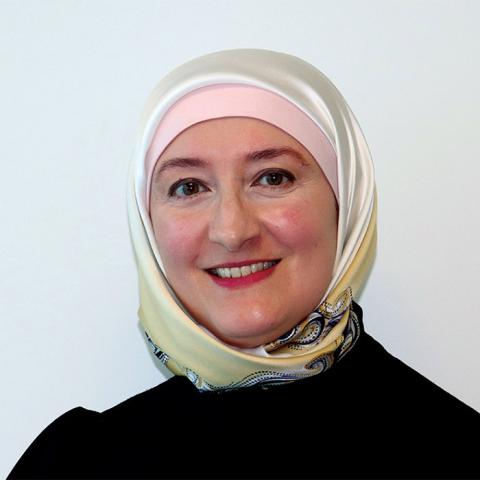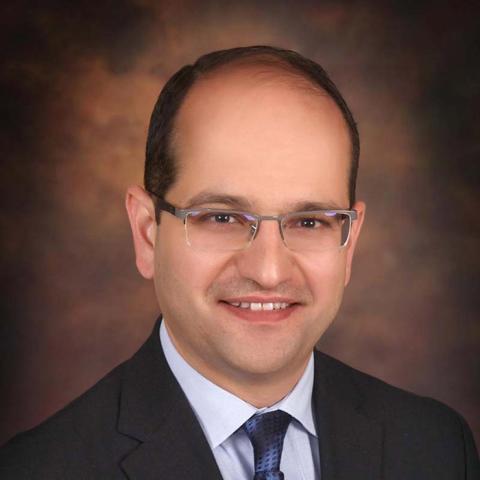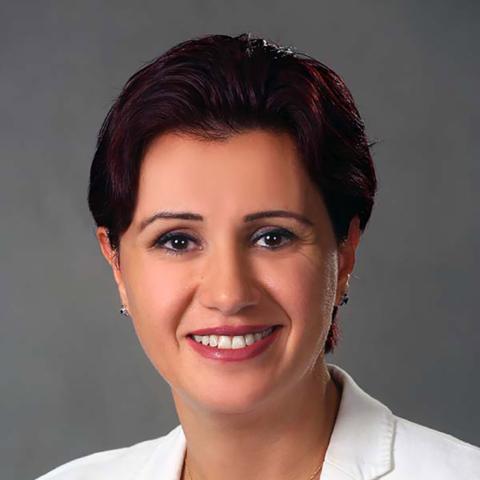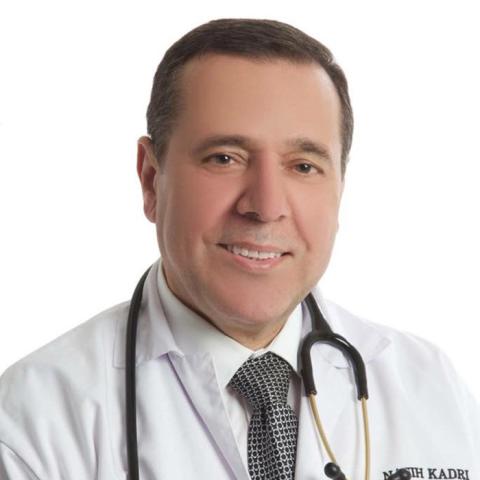Amyloid deposits cause disease by gradually accumulating within organs and thereby disrupting the structure and damaging the function of the affected tissues. In some cases, previously healthy organs can be substantially replaced by extensive amyloid deposits.
Amyloidosis is rare. It is estimated that every year around 1 person in every 100,000 develops systemic amyloidosis. Only around half of these people are diagnosed. Amyloidosis is recorded as the cause of death in between 0.5 to 1 out of every 1000 people.
No. Amyloidosis is not a transmissible disease.
The following types of amyloidosis are hereditary:
- ATTR amyloidosis, the most common type of amyloidosis, may be hereditary or non-hereditary (wild type ATTR amyloidosis).
- Some other, rare types of hereditary amyloidosis include Afib, ApoA1, AGel and ALys amyloidosis.
Relatives of patients with hereditary amyloidosis should consult with the Abdali National Amyloidosis Center (ANAC) doctors to discuss the possibility of genetic testing. Please call +962 6 510 9971.
The following types of amyloidosis are not hereditary:
- AL amyloidosis itself is not hereditary
- AA amyloidosis
If there is a definite diagnosis of these two types, then there is no need for any family members to undergo testing. However, the inflammatory diseases that are associated with AA amyloidosis do tend to run in families. The hereditary fever syndromes have a very clear genetic basis. Family members of patients with fever syndromes should consult with the ANAC doctors to discuss the possibility of genetic testing.
You should ask your doctor to refer you to the Abdali National Amyloidosis Centre (ANAC) at the Abdali Hospital, Amman, as soon as possible. You do not need to wait for a definite diagnosis of amyloidosis from your local doctor, or for determination of which type of amyloidosis you have. The outlook for patients diagnosed with amyloidosis has improved significantly in recent years. Outcomes are best when treatment is started early. So, if the possibility of amyloidosis has been raised it is important to be seen by amyloidosis specialists to confirm or rule out the diagnosis promptly and reliably.
You should ask your doctor to refer you to the Abdali National Amyloidosis Centre (ANAC) at the Abdali Hospital, Amman, as soon as possible. You do not have to wait for the local doctors to determine what type of amyloidosis you have. The ANAC provides a diagnostic service for amyloidosis patients throughout Jordan. It is the only specialist amyloidosis center in the country. Wherever possible, patients are discussed with the referring physician. Most patients with amyloidosis need long‑term surveillance, with six‑monthly or annual specialist follow-up at the ANAC in the shorter term.
When people are first told that they have amyloidosis, a rare disease which they have probably never heard of, they may experience a variety of emotions. It is normal to feel worried, shocked, or confused and concerned about what the future holds. Sometimes it is a relief to finally have a diagnosis after a prolonged period of ill health and medical uncertainty. Our doctors are experts in amyloidosis and the whole team are very caring and experienced. They will tell you what type of amyloidosis you have and explain your diagnosis to you clearly and answer all your questions. Most patients feel they can cope much better once they understand what the diagnosis means and what to expect in terms of treatment. There are several effective treatments available now. There are also promising new drugs in various stages of development, which offer considerable hope for the future. Amyloidosis is a rare disease, but you are not alone, and you will receive the best possible care and treatment from the ANAC, so there is cause for optimism.
Recent years have seen important progress in treatment and the outlook for patients diagnosed with amyloidosis today is far better than it was even a few years ago. In some types of amyloidosis currently available treatments may even lead to complete cure, while in others, there may be extended symptom free survival. Twenty years ago, the life expectancy of patients diagnosed with amyloidosis was usually only a few months or years, whereas now it is often 10 years or more.
No. AL amyloidosis is related to a type of bone marrow cancer called multiple myeloma, and it is treated in a similar fashion with chemotherapy drugs and sometimes with stem cell transplantation. However, amyloidosis is not cancer.
No. People carrying a mutation in the TTR gene do not always develop disease. Some cases have been reported where people over age 60 have no disease despite having two copies (one inherited from each parent) of the TTR mutation which results in production of the Val30Met TTR protein variant. About 1 in 500 people in northern Portugal carry a Val30Met TTR mutation, and 80% of them develop disease. About 1 in 25 people in northern Sweden carry this same mutation but only 11% of them develop disease. The reason for this geographic variation is unclear.
More than 100 different mutations in the TTR gene have been reported. Different mutations may cause a wide variety of different clinical symptoms. But there is often little correlation between the underlying mutation and the clinical disease features in hereditary ATTR amyloidosis. Within families the pattern is usually quite consistent for:
- age of onset
- rate of disease progression
- involvement of different body systems
In some families all affected members have just neuropathy, while in other families all affected members have both neuropathy and cardiac disease. In a few cases certain mutations have been associated with either particularly severe disease or with relatively limited disease. The most common TTR mutation worldwide leads to production of the Val30Met (V30M) TTR protein variant. People with this mutation often start to experience symptoms in their 30s. Peripheral and autonomic neuropathy are the main symptoms and heart problems are rare.
Sometimes people diagnosed with hereditary ATTR amyloidosis are not aware of anyone else in the family with the condition. This may be because the mutation first arose in that person, or because other family members were not diagnosed, or did not develop the disease despite having the mutation.
Genetic testing in a healthy person without symptoms can provide information on whether a mutation is present but cannot predict whether the person will go on to develop amyloidosis. The mutations that cause hereditary amyloidosis are variably penetrant. This means that they do not always cause disease. People who are at risk of having inherited a potentially amyloid-causing mutation may choose to undergo genetic testing after counselling with a physician at the ANAC.
Hereditary ATTR amyloidosis is the most recognized form of hereditary systemic amyloidosis. (‘Systemic’ means that several parts of the body are affected.) In overall terms it is nevertheless a rare disease. We do not know exactly how many people around the world have hereditary ATTR amyloidosis. More than 150 amyloid-forming variants (mutations) of TTR have been observed and different mutations may cause different disease manifestations. The commonest type, associated with a mutation of the TTR gene (called Val30Met or V30M), is believed to affect about 10,000 people worldwide. Despite being extremely rare in most parts of the world, hereditary ATTR amyloidosis is common in some very localized parts of Portugal, Sweden, and Japan. It may also be common, but under-diagnosed in several other regions including Spain, France, Brazil, Argentina, Cyprus, Bulgaria, and Ireland.
Hematological responses to chemotherapy are defined as follows:
- Complete response (CR): No FLCs detected (i.e. negative serum and urine immunofixation tests and normal FLC ratio)
- Very good partial response (VGPR): dFLC concentration below 40 mg/dl
- Partial response (PR): dFLC decrease more than 50% from previous value
The goal of therapy is to achieve either a complete response (CR) or a very good partial response (VGPR). In the event of a partial response (PR), doctors often consider a change in treatment regime.
For patients and their families, the most important measure of treatment success is how they actually feel. But sometimes there is a good response to treatment according to blood tests (hematological response) before the patient actually starts to feel better. Some patients feel worse while taking chemotherapy than they did beforehand. This may be because of the side effects of the drugs, organ damage caused by the amyloidosis or a combination of the two. Even if the patient does not yet feel better, a good hematological response is cause for optimism. Successful treatment prolongs life. Many patients start to feel the benefits of the drugs once they stop taking them. There are often improvements in breathlessness and leg swelling as heart function and kidney function improve. There are many measures that can be taken to combat drug side effects, so patients should not hesitate to discuss how they are feeling with their local doctors and nurses and with the Abdali National Amyloidosis Centre staff if necessary.
Once they stop taking chemotherapy some patients feel better right away, others feel the same and some may even feel worse. Some patients start gradually feeling better over the weeks to months after stopping chemotherapy. This is a very individual matter and patients and cares usually find it helpful to understand that, even if they feel unwell, it is quite possible that they may have had a good response to treatment. The goal of chemotherapy is suppression of the abnormal plasma cells so that they no longer produce amyloid forming free light chains. However, chemotherapy does not directly affect the existing amyloid deposits in the organs. Once new amyloid stops accumulating, the body may start to clear the existing amyloid deposits, but this is usually a slow process. There is no way of predicting what will happen for each individual patient. If complete response to chemotherapy is achieved, then amyloid deposits may remain stable in which case organ function will also stabilize. In some patients, amyloid deposits regress (diminish in size) once the amyloid is no longer building up. In either situation, it often takes several weeks to months till patients start to feel better. It is important to be aware of this, so that expectations are realistic. By the time that patients attend the 12 month visit to the ANAC, they are often feeling well enough to resume normal day to day life to a greater or lesser extent. Even if the patient does not yet feel better after stopping chemotherapy, a good response in terms of blood tests is cause for optimism. Successful treatment prolongs life.
Chemotherapy treatment is given in a series of courses called cycles. Each cycle lasts between 3 weeks and 5 weeks. During each cycle, each drug is given on a regular schedule e.g. the first day of each week. Sometimes there is a rest period without drugs at the end of each cycle. All patients receiving chemotherapy for AL amyloidosis should come for a thorough assessment at the ANAC after completing 3 cycles of chemotherapy. This used to be called ‘the three-month visit’. However, it may take a few weeks after the first ANAC appointment before local doctors start chemotherapy treatment. Also, many chemotherapy regimens involve 5-week cycles. So, in fact this crucial appointment which must take place after 3 chemotherapy cycles is often scheduled for 4 months or longer after the first visit to the ANAC. Plans for continued treatment are based on the assessment at this visit. The ongoing ALchemy study has shown that the earlier that we pick up on treatment responses, and adjust management accordingly, the better the patient’s outcome in the long term. If there is a good response to chemotherapy, without significant side effects, the consultants may recommend more cycles of the same regime. The most common regime is CVD (cyclophosphamide, velcade and dexamethasone). Velcade based regimes may be continued for a maximum of 8 cycles.
For most patients there are other treatment options available. In the case of relapsed disease, the doctors at the ANAC often recommend chemotherapy drugs different from those that were used previously. Such patients may then respond well to the new regime. Even in patients who have advanced disease at the time of diagnosis, there is sometimes a good response once treatment is started. Each patient’s situation is unique and should be discussed with the ANAC doctors and nurses.
All patients need to continue sending in monthly blood samples to the ANAC for evaluation of FLC concentration throughout chemotherapy and after stopping chemotherapy, for the foreseeable future. Even patients who have achieved a stable complete response and felt well for years must continue with the ongoing follow up of FLC levels as relapse could occur even after several years. Sometimes, after patients have been stable for some years, the ANAC consultants may recommend sending samples for FLC testing every two months rather than every month.
AL amyloidosis was previously known as primary amyloidosis and is currently the second most common type of amyloidosis in developed countries. In the UK about 500-600 new cases are diagnosed each yea








